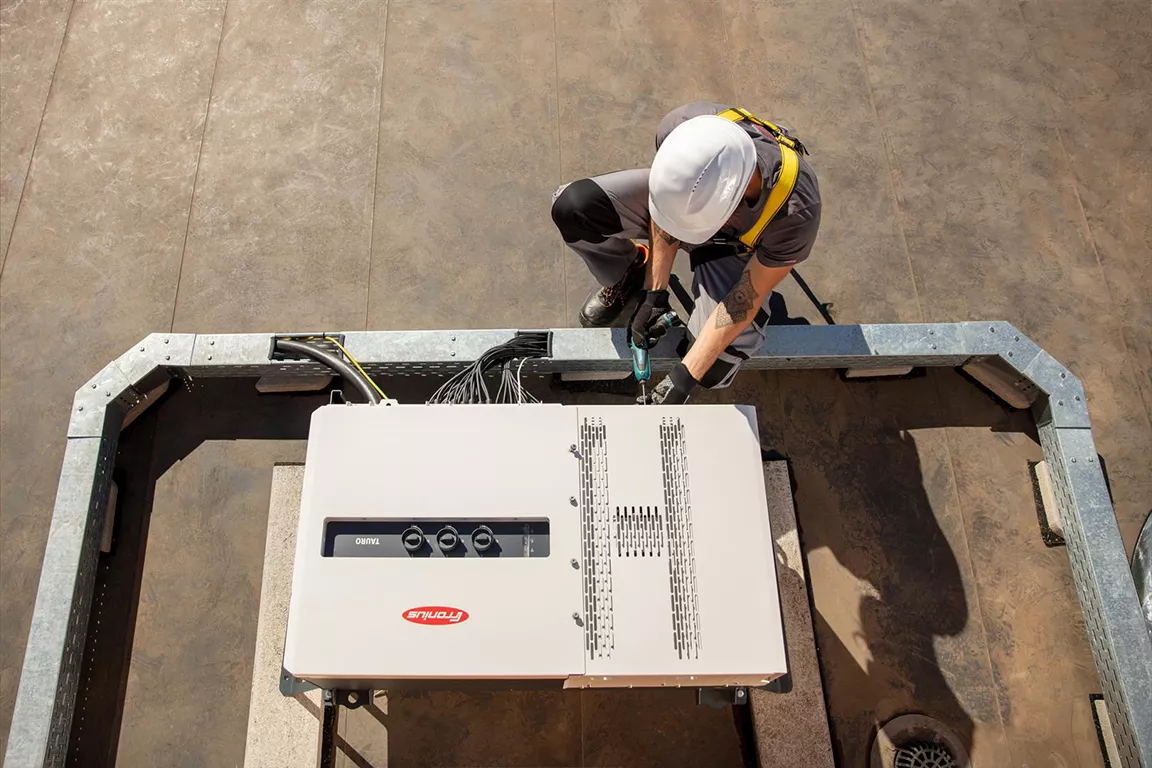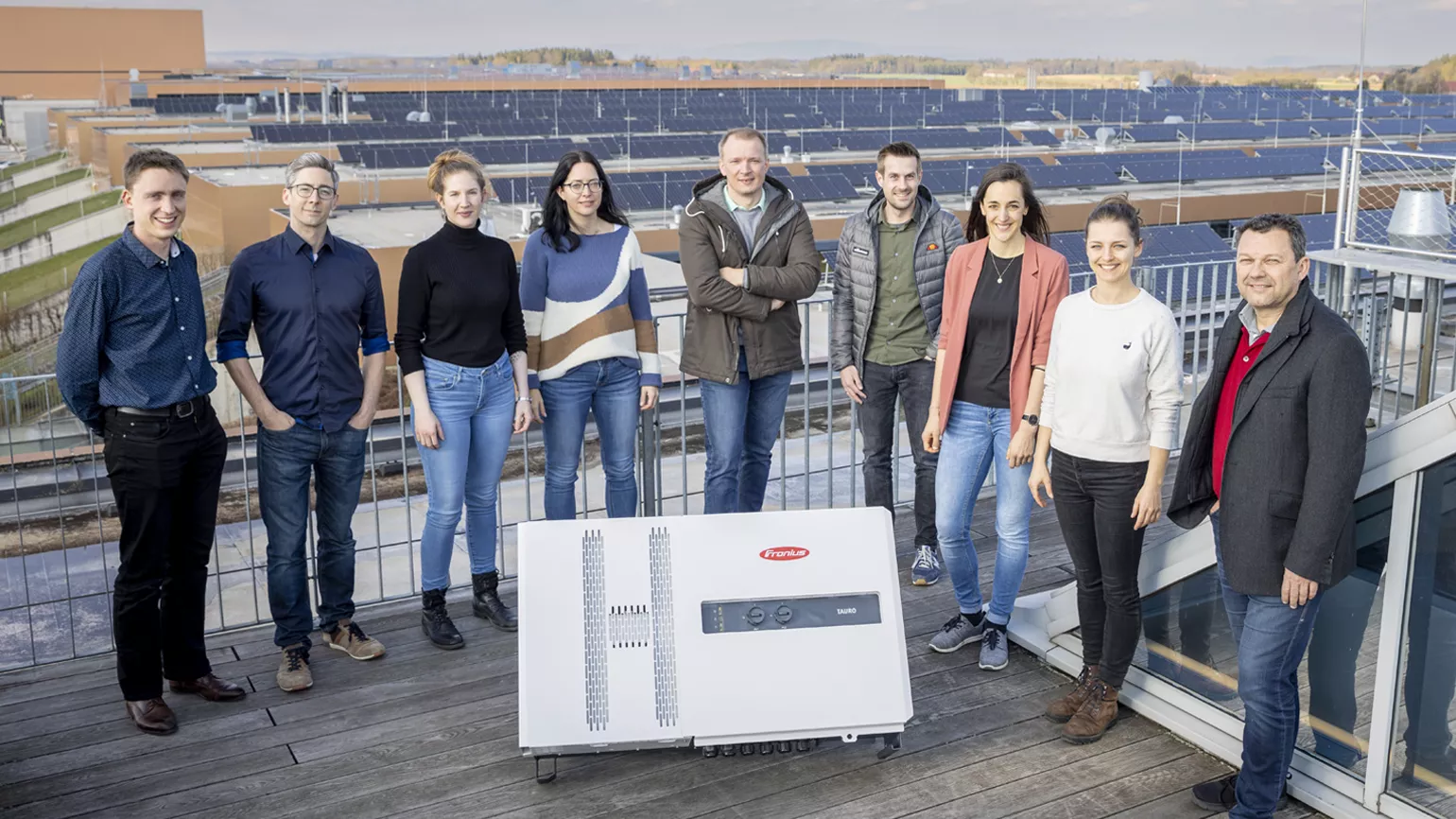Fronius Tauro Life Cycle Assessment – Part 2: Superb performance and sustainability
Tauro – our inverter for commercial use.
Results
The results presented below refer to the Fronius Tauro ECO 100. For the LCA itself, four major life cycle phases were modeled and thoroughly assessed according to the ISO guidelines for LCA (ISO 14040/44):
- The procurement of raw materials
- The production phase at Fronius locations
- The use phase
- The end-of-life (EOL) phase

The environmental performance of the Fronius Tauro ECO 100
Based on the data collected, the following statements can be made about the carbon footprint and benefits of the Tauro ECO 100:
Carbon footprint
Electricity from a PV system with the Fronius Tauro ECO 100 has a carbon footprint of approx. 15 to 80 g CO2e/kWh, whereas the carbon footprint of electricity from the grid is approx. 100 to 1,200 g CO2e/kWh, depending on the scenario and country.
More than a quarter of the total carbon footprint of the Fronius Tauro ECO 100 is accounted for in the component production phase.
The total carbon footprint of the Tauro ECO 100-D is 4,247.8 kg CO2e* (4,362.7 kg CO2e with an environmental “credit” of -114.9 kg CO2e from waste management).
*Depending on the respective LCA scenario
Benefits
Using electricity from a PV system with a Fronius Tauro ECO 100-D in Australia would generate an average carbon footprint of 18.1 g CO2e/kWh. In comparison, using electricity from the Australian grid would leave a carbon footprint between 600 to 950 g CO2e/kWh – about 33 to 56 times larger.
Roughly estimated, the carbon emissions saved by the entire PV system (including our inverter) over the 20-year life of the system* correspond to ...
- ...around 10,323 newly planted trees
- ...about 30,791,513 kilometers by car
- ...or just under 2,018 round-trip flights from Vienna to New York
*in the scenario carried out

For the Fronius Tauro ECO 100-D, the carbon payback period – the time it takes for the avoided carbon emissions to offset the product’s carbon emissions – ranges from 0.4 to 1.9 years, depending on the scenario. After this time, operators of the Tauro ECO 100 save carbon emissions and create a positive environmental impact.
If a Tauro ECO 100 inverter is used for 20 years, the total amount of avoided carbon dioxide equivalent (CO2e) emissions can be up to 52.9 times higher than the carbon emissions generated during the entire life cycle of the device. Similar values are obtained for the energy payback period – it is within the range of 0.3 to 0.8 years. If a Tauro ECO 100 inverter is used for 20 years, the total energy generated can be up to 62.7 times higher than the energy expended in the entire life cycle of the device.
So much for the hard facts on the environmental benefits and advantages of our inverter. You will soon find out in the third and final part of our news series what the life cycle assessment and the results mean for customers and installers.
